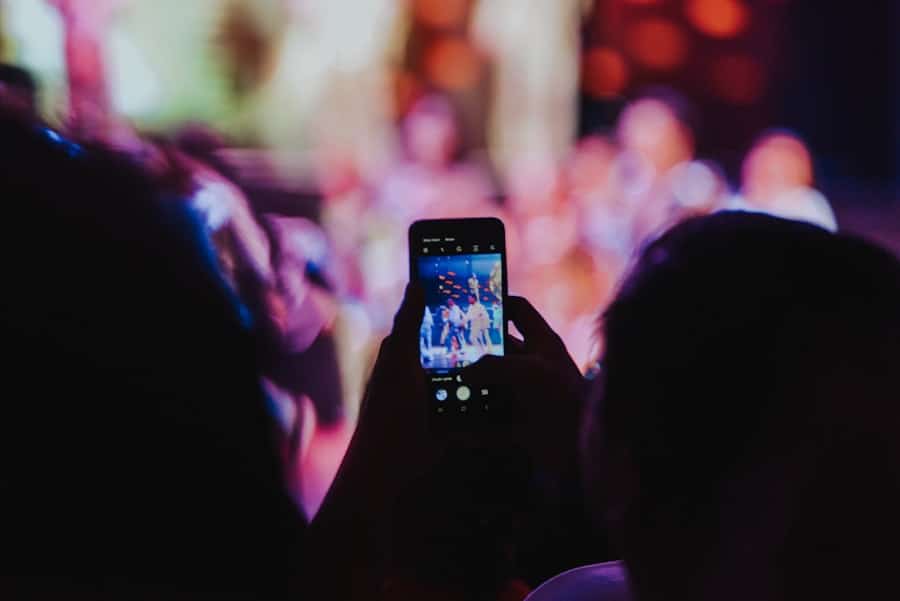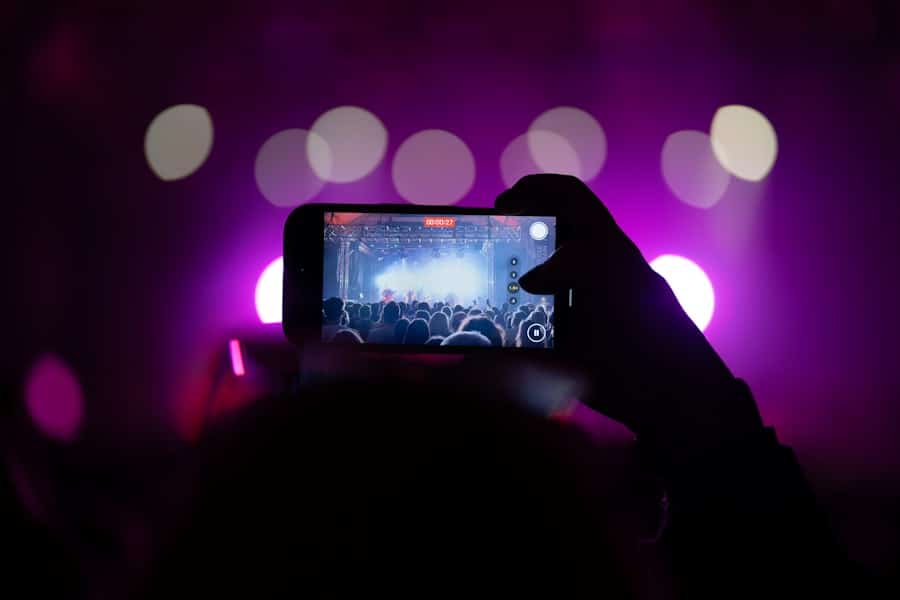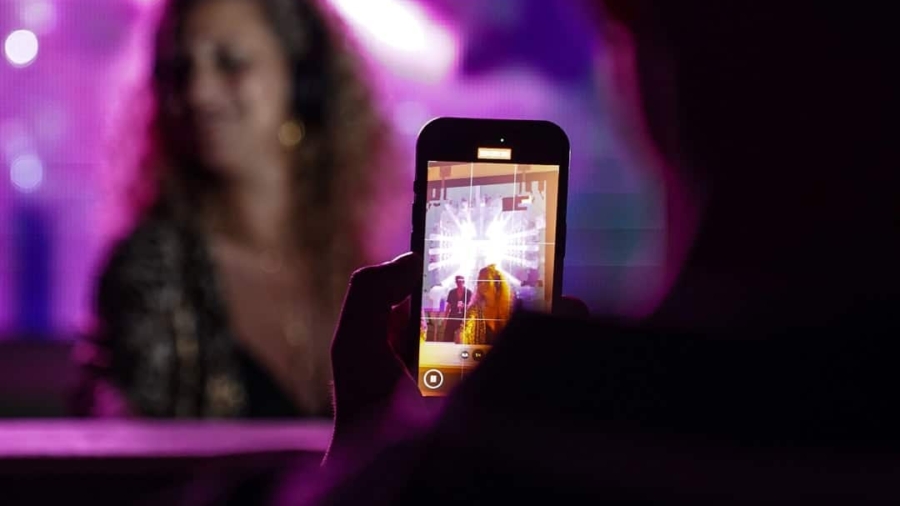The Internet of Things (IoT) has emerged as a transformative force across various sectors, fundamentally altering how we interact with technology and consume content. At its core, IoT refers to the network of interconnected devices that communicate and exchange data over the internet. This connectivity enables a seamless flow of information, allowing devices to work in concert to enhance user experiences.
In the realm of entertainment, IoT has paved the way for personalized experiences that cater to individual preferences, habits, and behaviors. As consumers increasingly seek tailored content that resonates with their unique tastes, the integration of IoT into entertainment platforms has become a pivotal development. Personalized entertainment experiences are no longer a luxury but an expectation among users.
With the proliferation of streaming services, gaming platforms, and smart home devices, audiences are inundated with choices. The challenge lies in curating content that aligns with their interests while also providing an engaging experience. IoT plays a crucial role in this endeavor by leveraging data analytics and machine learning algorithms to understand user behavior.
By analyzing patterns in viewing habits, listening preferences, and even social interactions, IoT systems can create a more immersive and satisfying entertainment landscape that evolves alongside the user.
Key Takeaways
- IoT is revolutionizing personalized entertainment experiences by gathering user data and enabling customized content recommendations.
- IoT devices such as smart TVs, streaming devices, and wearables have a significant impact on personalized entertainment.
- Customized content recommendations are made possible through IoT’s ability to gather and analyze user data.
- IoT enhances interactive and immersive entertainment experiences through its influence on personalized advertising and content delivery.
- Privacy and security concerns arise with the use of IoT in personalized entertainment, prompting the need for future developments and trends in this space.
The Role of IoT in Gathering User Data for Personalization
The backbone of personalized entertainment lies in the ability to gather and analyze user data effectively. IoT devices are equipped with sensors and software that collect vast amounts of information about user interactions. For instance, smart TVs can track viewing habits, noting which shows are watched most frequently and at what times.
Similarly, music streaming services can monitor listening patterns, identifying genres and artists that resonate with individual users.
Moreover, the integration of IoT devices into everyday life allows for a more nuanced understanding of user preferences.
Smart home assistants can learn from voice commands and interactions, tailoring recommendations based on previous requests. For example, if a user frequently asks for movie suggestions in the sci-fi genre, the assistant can prioritize similar content in future recommendations. This continuous feedback loop not only enhances personalization but also fosters a deeper connection between users and their entertainment platforms.
IoT Devices and Their Impact on Personalized Entertainment

The variety of IoT devices available today significantly influences how personalized entertainment experiences are delivered. Smart TVs, streaming devices, wearables, and even gaming consoles are all part of this ecosystem, each contributing unique capabilities to enhance user engagement. Smart TVs equipped with IoT technology can offer features such as voice recognition and gesture control, allowing users to navigate content effortlessly.
This level of interactivity transforms passive viewing into an engaging experience where users feel more in control. Wearable devices also play a vital role in shaping personalized entertainment experiences. Fitness trackers and smartwatches can monitor physical activity and health metrics, which can be integrated into gaming or fitness-related content.
For instance, a fitness app might suggest workout videos based on the user’s activity levels or goals, creating a tailored experience that motivates users to stay active. This convergence of health data and entertainment not only personalizes content but also encourages users to engage with it more meaningfully.
How IoT Enables Customized Content Recommendations
One of the most significant advantages of IoT in personalized entertainment is its ability to facilitate customized content recommendations. Streaming platforms like Netflix and Spotify utilize sophisticated algorithms that analyze user data to suggest content tailored to individual tastes. These algorithms consider various factors, including viewing history, genre preferences, and even the time of day when content is consumed.
By harnessing the power of IoT, these platforms can deliver recommendations that feel intuitive and relevant. For example, if a user frequently watches romantic comedies on a streaming service, the platform’s algorithm will prioritize similar titles in its recommendations. Additionally, IoT-enabled devices can adapt these suggestions based on real-time data.
If a user watches a particular show or movie multiple times, the system may infer a strong preference for that genre or style and adjust future recommendations accordingly. This dynamic approach to content curation not only enhances user satisfaction but also increases engagement by keeping viewers invested in their entertainment choices.
The Influence of IoT on Interactive and Immersive Entertainment Experiences
The advent of IoT has ushered in a new era of interactive and immersive entertainment experiences that were previously unimaginable. Virtual reality (VR) and augmented reality (AR) technologies have gained traction thanks to IoT advancements, allowing users to engage with content in ways that transcend traditional viewing methods. For instance, VR headsets can transport users into entirely different worlds, where they can interact with characters and environments in real-time.
This level of immersion creates a sense of presence that captivates audiences like never before. Moreover, IoT facilitates multi-device interactions that enhance the overall experience. Imagine watching a live sports event where viewers can use their smartphones or tablets to access real-time statistics, player information, or even participate in polls during the game.
This interconnectedness enriches the viewing experience by providing additional layers of engagement that keep audiences invested in the action unfolding on-screen. As technology continues to evolve, the potential for interactive entertainment experiences will only expand, offering users unprecedented opportunities for involvement.
IoT and Personalized Advertising in Entertainment

Personalized advertising is another area where IoT has made significant strides within the entertainment sector. Traditional advertising methods often rely on broad demographics or general audience segments, but IoT enables advertisers to target individuals based on their specific preferences and behaviors. By analyzing data collected from various devices, advertisers can create tailored campaigns that resonate with users on a personal level.
For example, if a user frequently engages with horror films on a streaming platform, advertisers can serve them ads for upcoming horror movie releases or related merchandise. This targeted approach not only increases the likelihood of conversion but also enhances the overall user experience by presenting relevant content rather than generic advertisements. Furthermore, IoT allows for real-time adjustments to advertising strategies based on user interactions, ensuring that campaigns remain effective and engaging.
Privacy and Security Concerns in IoT-enabled Personalized Entertainment
While the benefits of IoT-enabled personalized entertainment are substantial, they come with inherent privacy and security concerns that cannot be overlooked. The collection of vast amounts of user data raises questions about how this information is stored, used, and shared. Users may feel apprehensive about their data being exploited for commercial gain or falling into the wrong hands due to inadequate security measures.
To address these concerns, companies must prioritize transparency and user consent when it comes to data collection practices. Clear communication about what data is being collected and how it will be used is essential for building trust with consumers. Additionally, implementing robust security protocols to protect user information is crucial in safeguarding against potential breaches or unauthorized access.
As the landscape of personalized entertainment continues to evolve, striking a balance between personalization and privacy will be paramount.
Future Trends and Developments in IoT for Personalized Entertainment Experiences
Looking ahead, the future of IoT in personalized entertainment is poised for remarkable advancements driven by emerging technologies and evolving consumer expectations. One notable trend is the increasing integration of artificial intelligence (AI) with IoT systems to enhance personalization further. AI algorithms can analyze complex datasets more efficiently than ever before, enabling platforms to deliver hyper-personalized content recommendations that adapt in real-time based on user behavior.
Additionally, advancements in 5G technology will play a pivotal role in shaping the future of IoT-enabled entertainment experiences. With faster internet speeds and lower latency, users will be able to access high-quality streaming content seamlessly across multiple devices without interruptions. This enhanced connectivity will facilitate more immersive experiences such as live-streamed events or interactive gaming sessions that require real-time responsiveness.
As consumers continue to demand more personalized experiences in their entertainment choices, the role of IoT will only grow more significant. The convergence of technology will lead to innovative solutions that redefine how we engage with content while ensuring that privacy and security remain at the forefront of these developments. The future promises an exciting landscape where personalized entertainment experiences become increasingly sophisticated and tailored to individual preferences.
A related article that complements this topic is The Best Headphones 2023, which explores the latest advancements in headphone technology. These innovations are crucial for enhancing personalized entertainment, as they provide superior sound quality and connectivity options that integrate seamlessly with IoT devices, allowing users to enjoy a more customized and engaging audio experience.
FAQs
What is IoT?
IoT stands for the Internet of Things, which refers to the network of physical devices, vehicles, home appliances, and other items embedded with electronics, software, sensors, actuators, and connectivity which enables these things to connect and exchange data.
How does IoT enable personalized entertainment experiences?
IoT enables personalized entertainment experiences by allowing devices to collect and analyze data about user preferences and behaviors. This data can then be used to tailor entertainment content and experiences to individual users, creating a more personalized and engaging entertainment experience.
What are some examples of personalized entertainment experiences enabled by IoT?
Examples of personalized entertainment experiences enabled by IoT include smart home entertainment systems that adjust lighting, temperature, and audiovisual settings based on user preferences, personalized content recommendations on streaming platforms, and interactive experiences at theme parks and entertainment venues.
What are the benefits of personalized entertainment experiences enabled by IoT?
The benefits of personalized entertainment experiences enabled by IoT include increased user engagement and satisfaction, the ability to deliver targeted advertising and promotions, and the potential for new revenue streams through personalized content and experiences.
What are some potential privacy and security concerns related to IoT-enabled personalized entertainment experiences?
Potential privacy and security concerns related to IoT-enabled personalized entertainment experiences include the collection and use of personal data without user consent, the risk of data breaches and unauthorized access to personal information, and the potential for IoT devices to be exploited for malicious purposes.

